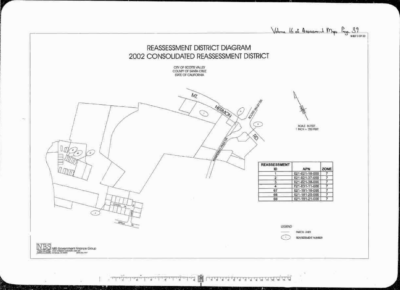If you were getting your records digitized, would you ask your scanning partner if all the images will be captured?
Probably not.
You’re expecting each image to be captured, but what you’re not thinking about is if each of those images will be framed.
Capturing digital images during the scanning process and framing them are distinct steps in a scanning project, and just because you get one doesn’t mean you get the other.
Our article will explain what “image framing” means, describe how digital images get framed, and talk about the benefits of framing.
Image Framing Defined
Digital imaging framing is creating a border around an image so only the image itself, and not the background, is presented.
Framing is important to digital images because if an image is unframed, there can be extra “noise” around the actual document that is unnecessary and bothersome.
By framing, or “cropping,” an image and removing the bits around it, you’re presented with a cleaner final result.

Uncropped digital image

Cropped digital image
How Digital Images Get Framed
In some cases images can be framed programmatically, meaning through software processes. To be effective the images on the scanned records should be clean and clearly identified.
Because this isn’t always the case, programmatic framing can “fail” and some images won’t be framed properly or framed at all. Manual framing corrects this, meaning a person looks at the affected images and draws a border (frame) around the image as best as possible.
Manual framing is labor-intensive and is more expensive because of it. And in some cases even a human can’t find a frame on an image because it’s just so bad. It’s hard to imagine but there are cases where images overlap (completely obliviating any distinction between images) or are just so poor quality (super dark due to how the original material was photographed) that they can’t be captured.
The Benefit Of Framing Your Images
Framing provides you with the cleanest version of your images and will most accurately reflect the original material.
For example, let’s say you’re scanning 35mm microfiche sheets that contain engineering drawings. If you just scan the entire fiche and don’t frame the images, you’ll get something like this:

It can be useful in a sense, but you’re likely interested in the individual images. Framing allows each of those drawings to be exported as an individual image or set of images, replicating the original hard copy document.

Framing isn’t required but most people don’t want to have a document with multiple images on it. In that case, zooming in and trying to figure out which image has the relevant data is an extra step.
Do You Always Need To Frame Your Images?
No, you don’t.
If you have clean records and the images are nicely set up to be programmatically framed, that’s great. But if they’re a bit messy and you don’t want to spend the money on manual framing, it’s possible to leave them as-is.
Some applications, such as our Digital ReeL solution, allow you to manually frame your own images when it’s needed.
As an example, if you have records with poor images that can’t be programmatically framed but you don’t access them a lot, you probably don’t want to spend the money to do so. And if they’re in our Digital ReeL hosted platform, when you do need to get an image, you just find it in the app and draw a box to frame and export the image.
Next Steps
Reach out to us today! Click the “Get Your Quote” button below, fill out the form, and we’ll quickly reply to you to discuss your project.
Further Reading
Check out a few more articles that are related to digital image framing:
“Quality Assurance & Digital Conversion” describes how QA affects your project and illustrates a few different ways to implement QA in your conversion project.
“Digitization & The Chain Of Custody” is an overview of how the chain of custody of your records applies in a digitization project. An example project is provided in a step-by-step description.
“Should You Scan Your Records In Bitonal Or Grayscale?” lays out the differences between black/white (bitonal) and grayscale images and how to choose what’s best for your project.

